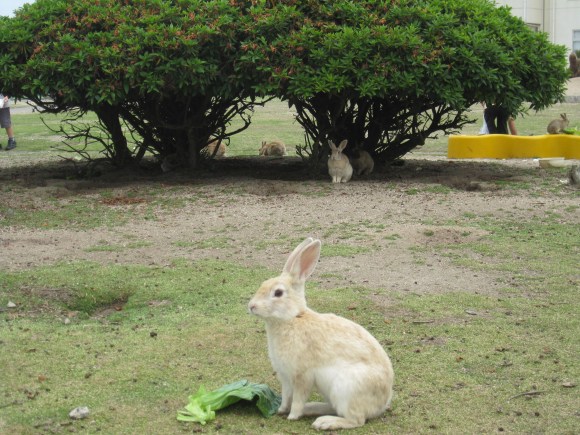
In some ways, the island of Okunoshima, in western Japan’s Setonaikai Inland Sea, seems like a terrible vacation spot. It’s already in an out-of-the-way region of the country, and with no connecting bridges, the only way to get there is by boat.
Then there’s its dark past. During the 1920s, ‘30s, and early ‘40s, Okunoshima was the site of a secret chemical weapons lab for the Japanese Imperial Army. The clandestine work being carried out there earned it the sinister nicknames Poison Gas Island and The Island Erased from the Maps.
Happily, the postwar years have seen a return to more peaceful, benign activities on Okunoshima. As a matter of fact, in the last few years it’s become one of the area’s most beloved tourist destinations, and the reason why is easy to see from the other name Okunoshima is called by, Rabbit Island.
In contrast to the numerous cat islands that dot Japan’s waters, Okunoshima, with a coastal length of 4.3 kilometers (2.7 miles), is home to some 700 wild rabbits.
Ferries from two ports connect the island to the rest of the country. For travelers coming from Kyushu or one of the cities on the main island of Honshu, such as Tokyo or Kyoto, the most convenient route is to travel by the Shinkansen bullet train to Mihara Station in Hiroshima Prefecture. From there, it’s about a 20-minute ride south on the Kure Line to Tadanoumi Station, which is within walking distance of the port where ships depart for the 13-minute cruise to Okunoshima.
Alternatively, you can do what we did and take the ferry from Sakari Port on Omishima Island in Ehime Prefecture. Since Omishima is part of the beautiful Shimanami Kaido Cycling Road, this is a great option for those getting around the region by bike, as getting to Sakari involves only about a 20-minute detour from the regular course. Ferries from here also reach Okunojima in under 15 minutes.
▼ The Shimanami Kaido
It goes without saying that you should only make the trip to Okunoshima if you’ve got a thing for rabbits. Depending on the timing of your visit, being OK around large groups of kids would also be a plus. We stopped by on a Sunday morning and shared the ferry and island with several families, tykes in tow, who’d come to see the island’s bunnies.
No sooner had we set foot on the island than we came across a contingent of Okunoshima’s long-eared residents.
We’d caught the first ferry from Sakari, which departs at 9 a.m., and the animals were up and ready for breakfast when we arrived. Many of the people who’d come over on the boat with us carried bags of cabbage, chopped carrots, or other vegetables to give to the rabbits.
Still, these are wild animals, and there are a couple of ground rules and safety precautions visitors are asked to observe. Signs caution against feeding the rabbits out of the palm of your hand. They’re likely to nick you with their sharp teeth, opening up a wound and the risk of infection at the same time.
As cuddly as they may look, visitors are also asked to refrain from picking the animals up. Chasing after them is also against the rules, and to be honest we can’t see why you’d even be tempted to. They’ve become incredibly comfortable around people, and won’t scamper away no matter how close you get.
▼ Hey guys.
▼ “Oh, hey, welcome to our island.”
While some rumors speculate the descendants of test subjects from the poison gas lab, former workers say that all such animals were disposed of when the facility was shut down by the Allied Forces at the end of World War II. Instead, it seems that the current rabbit population traces its roots to the early 1970s, when a group of eight rabbits that had been raised at the elementary school on a different island were set loose on Okunoshima.
If eight healthy human beings were trapped together on an island, we imagine it wouldn’t be long before some of them stopped spending the night alone. The same goes for rabbits, and with their well-known diligence in carrying out their biological duty to keep the species going by creating the largest next generation possible, Rabbit Island turned into what it is today.
If you’d like to be in close proximity to rabbits 24 hours a day, you can even spend the night on Okunoshima, which has both a seaside campground and a hotel. The animals aren’t allowed inside the latter though, and a low fence keeps them out of the area where campers pitch their tents.
While we were never more than a few seconds away from our next rabbit spotting, the greatest concentration of them is on the grassy fields near the hotel. There’s a shuttle bus that runs between there and the port, but should you miss it, it’s only about a 10-minute walk, which includes some nice views of the Inland Sea.
Along the way, you’ll pass by the visitor center, where inside you can learn more about the island’s ecosystem.
▼ And where outside you’ll find these rabbit ear simulator/sculptures
Japanese manners stipulate that it’s good form to bring a gift when visiting the home of another. If you made the cultural faux pas of showing up on Okunoshima without anything for the bunnies, the hotel sells cups of rabbit feed for 100 yen (US $1), or small bags for 540 ($5.27). We doubt you’d have any trouble going through a whole sack, since we saw dozens of animals frolicking and enjoying the food being provided by their numerous doting visitors.
▼ Remember: The water in this tank is for rabbits, not people.
▼ This seems as good a time as any to point out that Japanese carrots are amazingly delicious.
Being surrounded by so many bunnies, you might think they all start to blend together, especially since they all seem to be the same breed. Even still, many of them find little ways to stand out, sometimes by literally standing.
Then there’s this little guy, who pulls off the trick of somehow being even cuter than his already adorable brethren.
Cute as they may be, there is one danger to watch out for. As you might have noticed in some of these pictures, the rabbits on Okunoshima like to dig little bunny-sized pits to rest in.
While they sure do look cozy in there, they obviously don’t go to the trouble of filling the compact trenches back in with soil every time they crawl out. The result is that during the midmorning, when the animals are actively moving about and searching for food, the ground of Okunoshima is littered with holes.
You’ll want to keep an eye out for them when you move off of the paved road, since one misstep is a good way to twist an ankle or tweak a knee, something cyclists travelling the Shimanami Kaido will especially want to avoid.
▼ Don’t expect the rabbits to let you ride them back home if you injure yourself, either.
That minor concern aside, though, we wholeheartedly recommend spending a couple hours on Omishima. Really, the only downside is how badly we want to go back.
In the meantime, we may have to tide ourselves over with an afternoon at Tokyo’s rabbit cafe.
Related: Kyukamura Okunoshima website (English), Okunoshima ferry schedule (Japanese)
Photos: RocketNews24

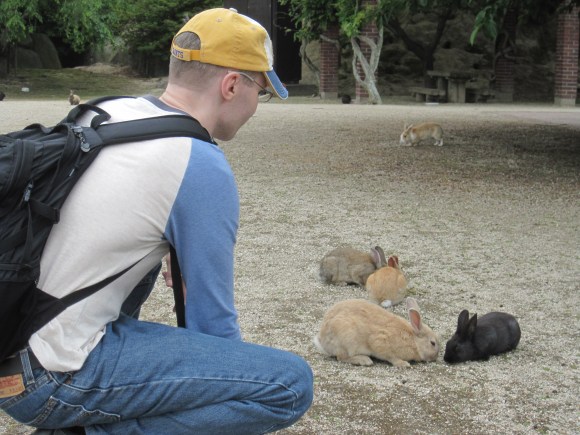
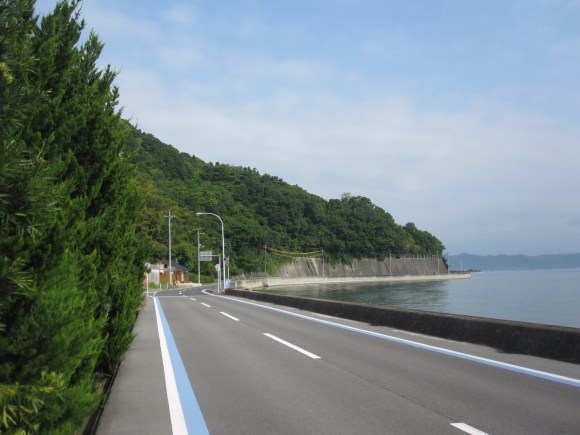
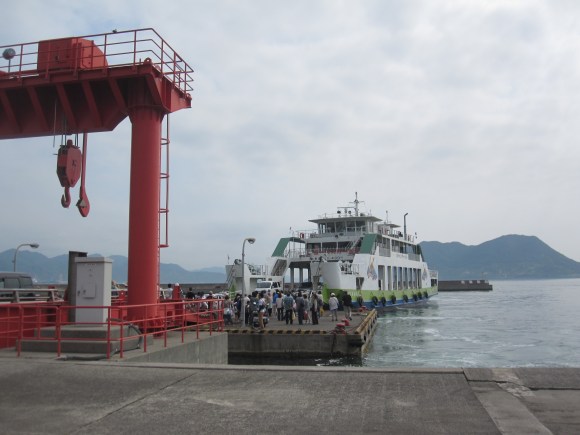
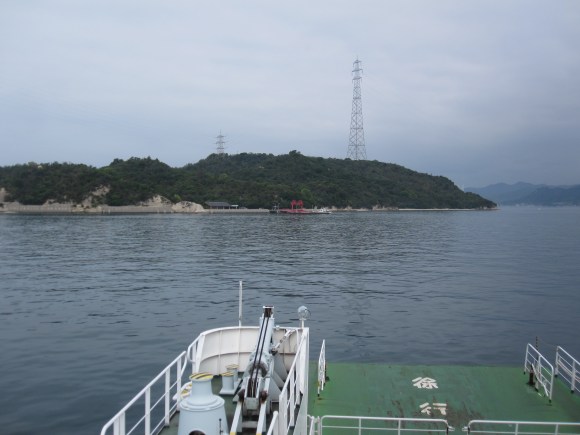

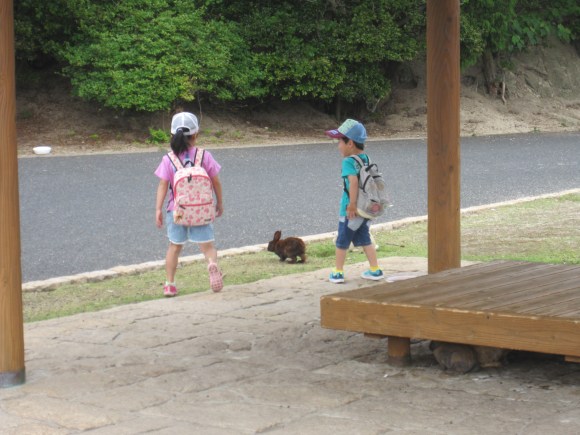
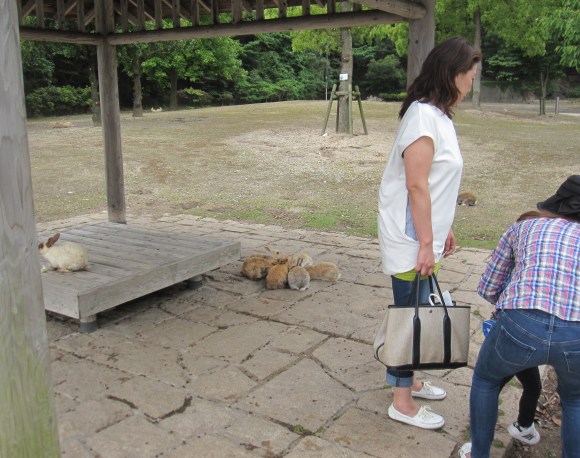
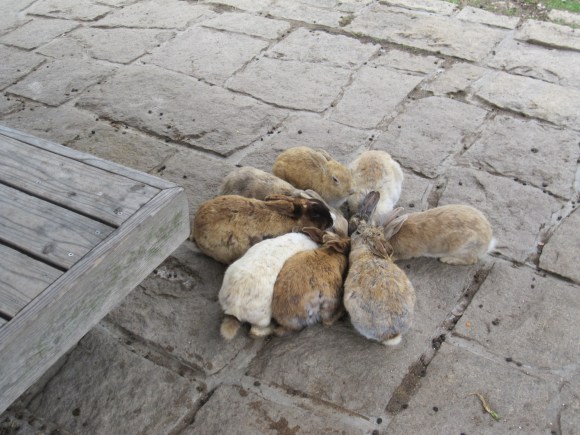
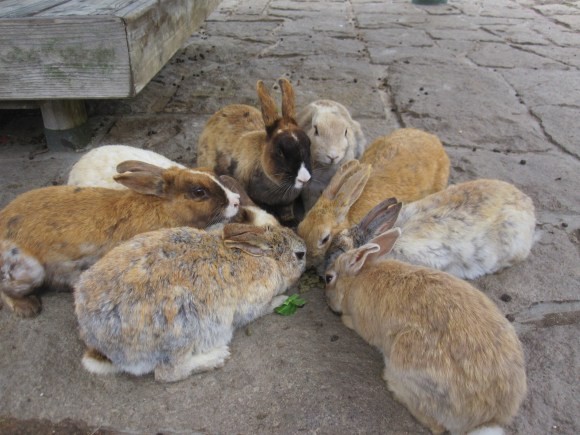

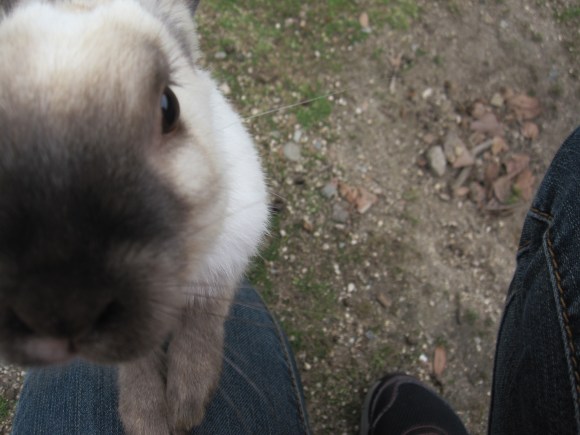
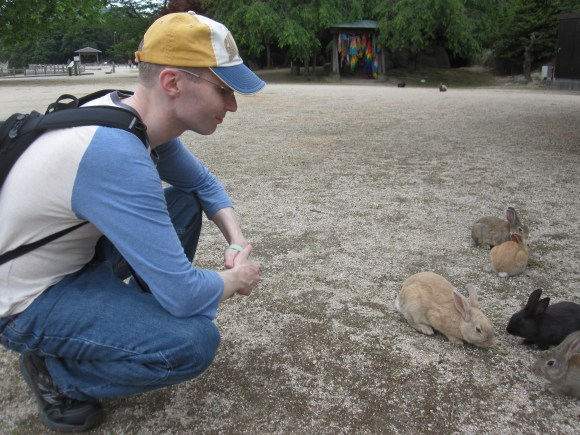
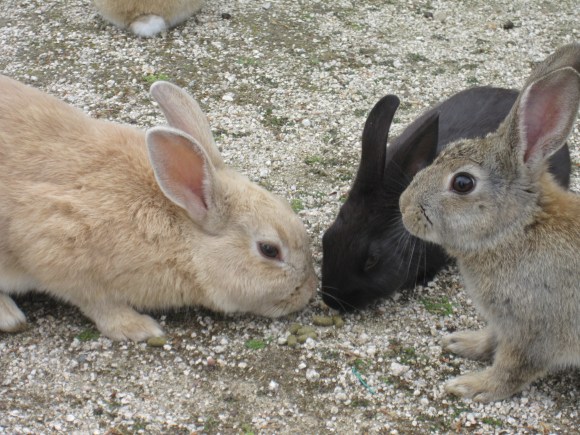
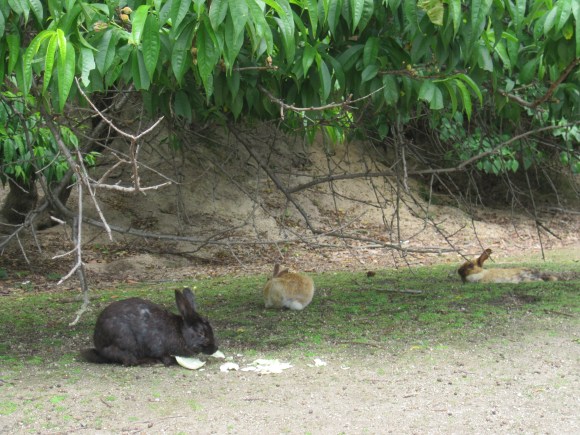
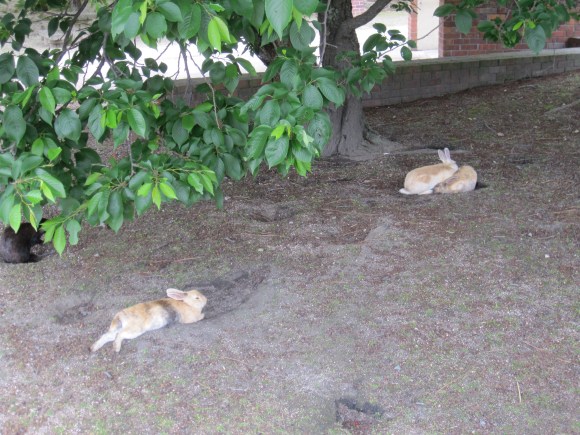
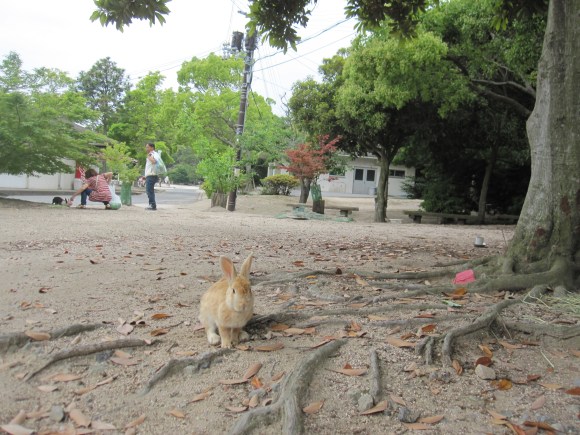
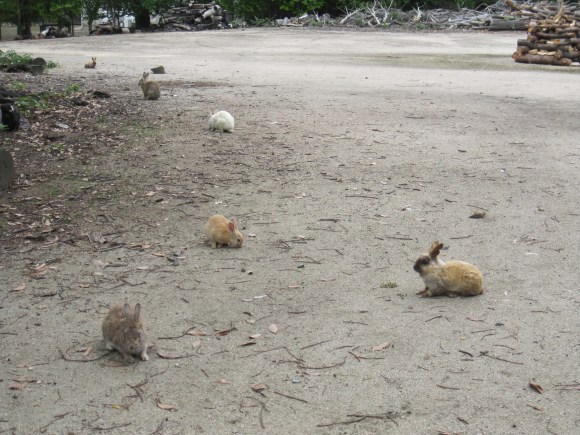
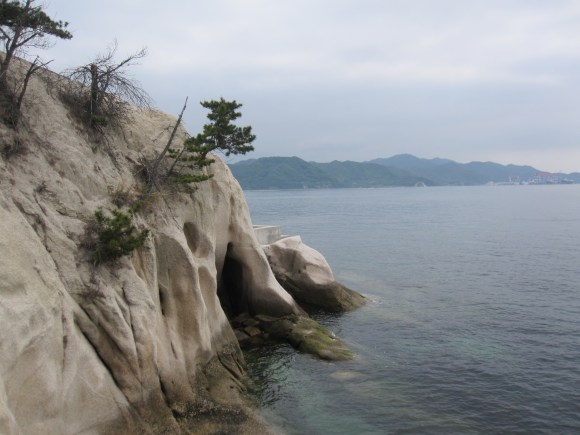

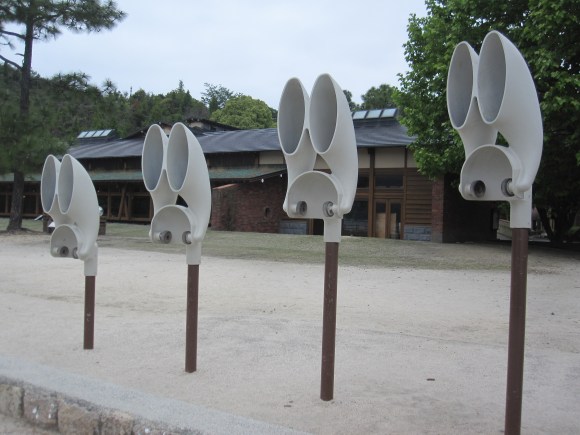
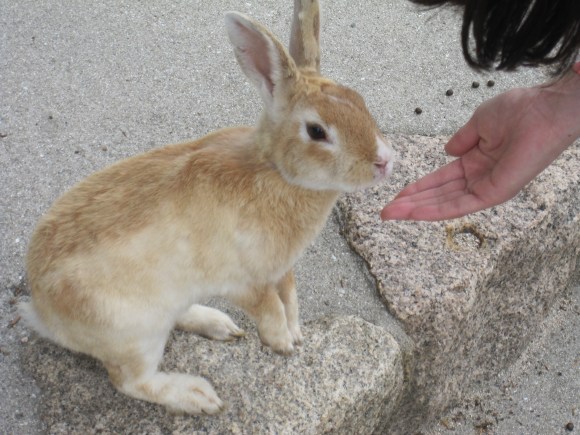
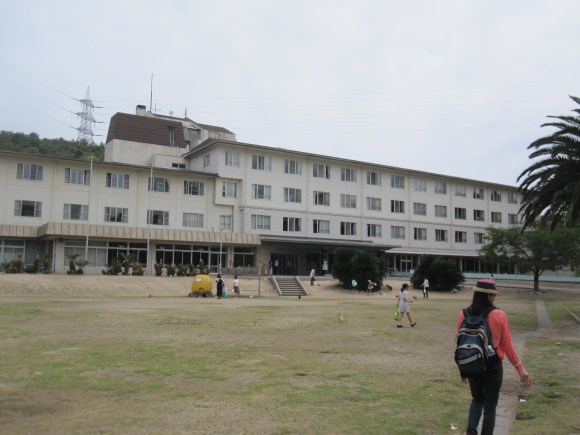
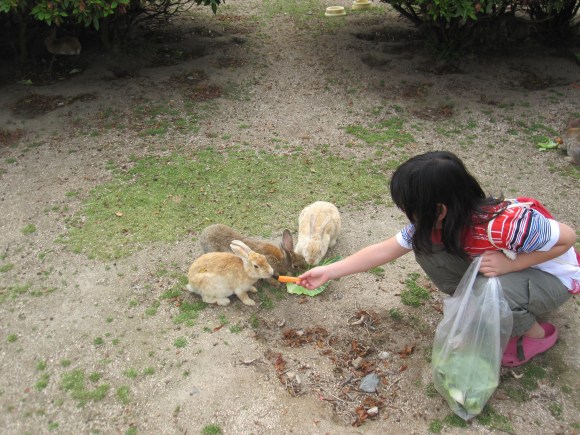
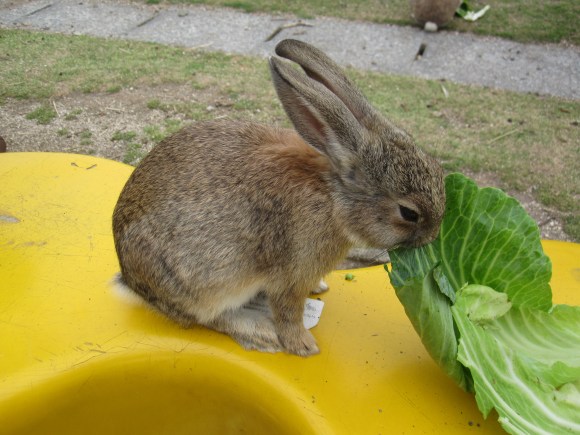
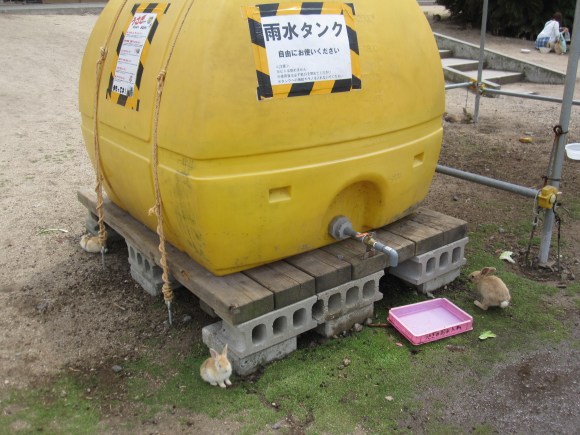
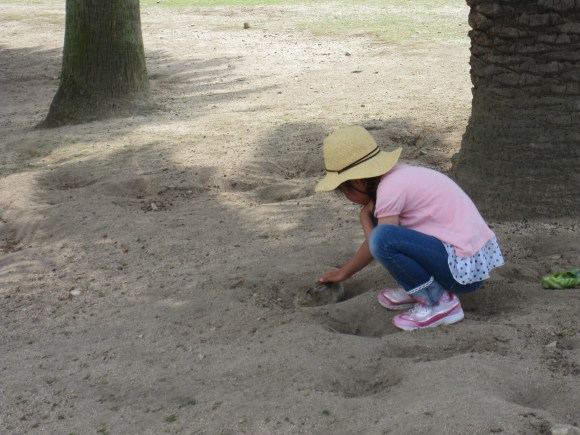
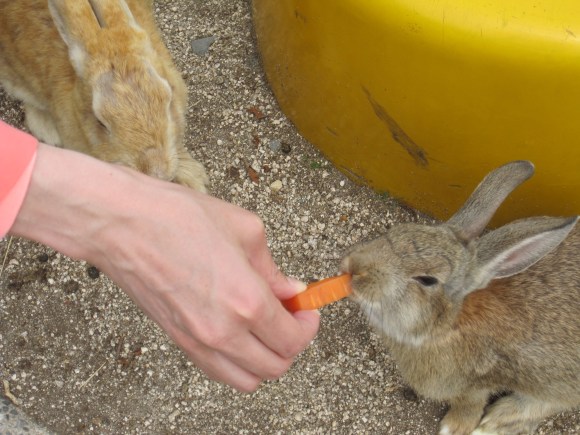
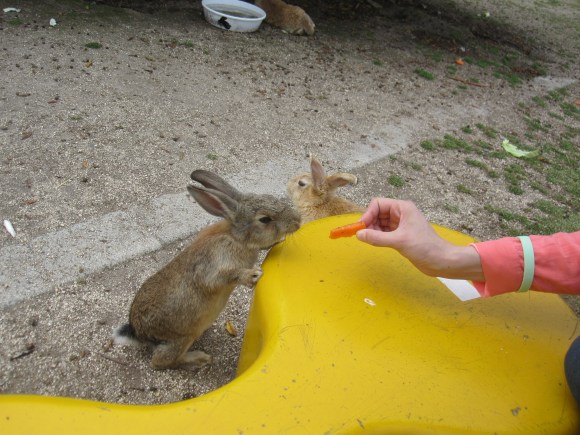
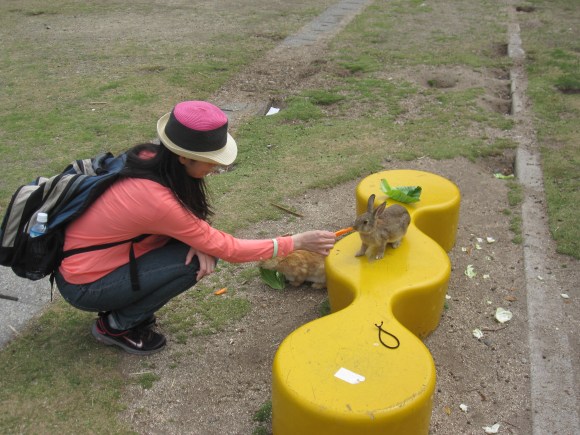
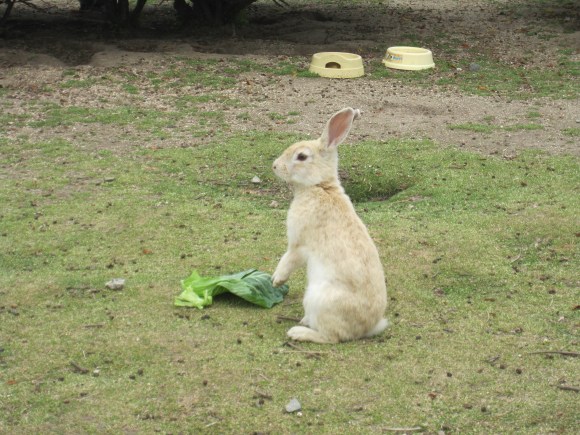
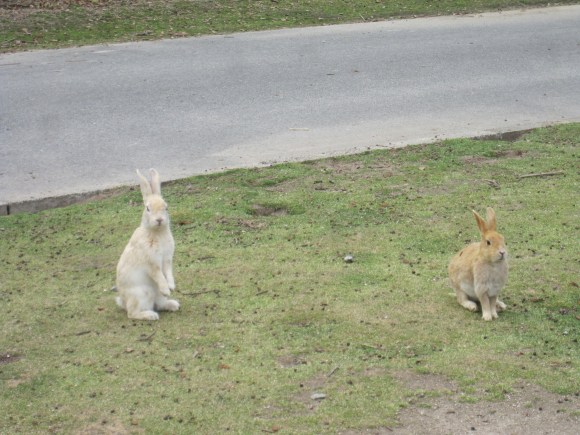

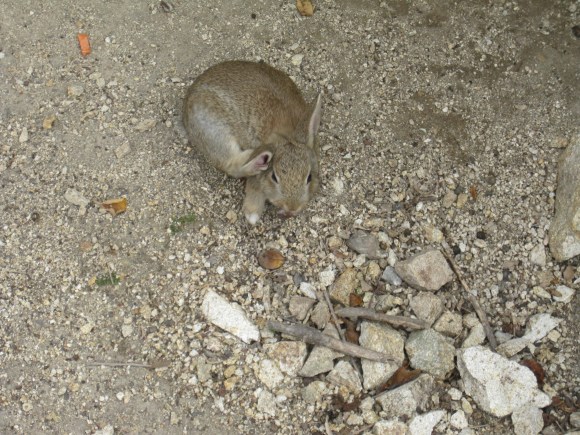
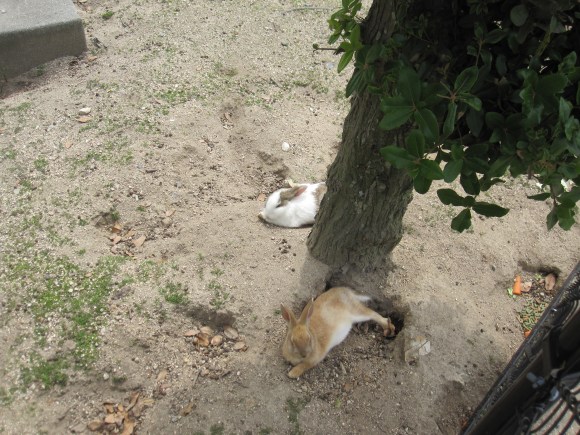

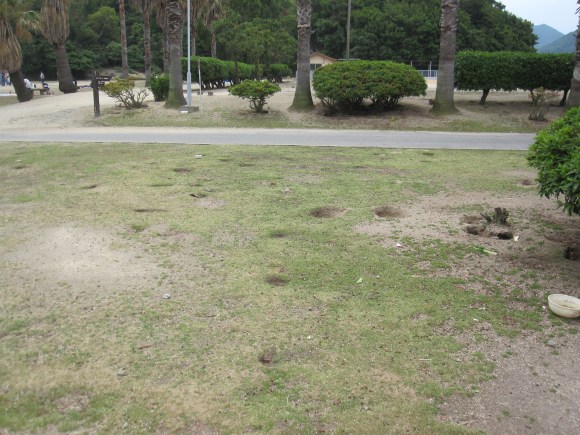
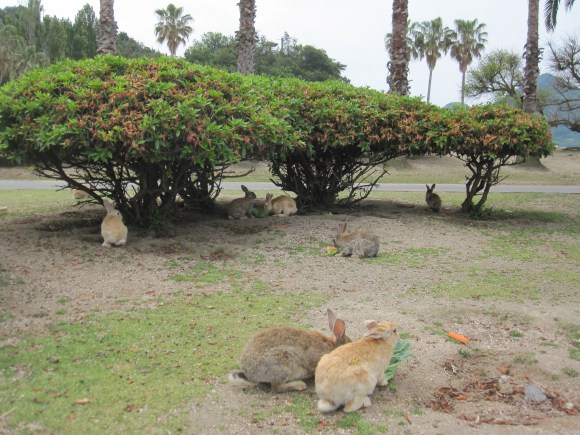
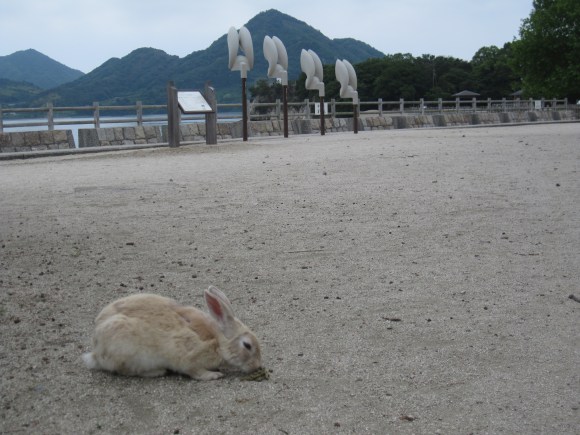
 Trial of man accused of kicking rabbits to death on Japan’s rabbit island comes to an end
Trial of man accused of kicking rabbits to death on Japan’s rabbit island comes to an end We visited Rabbit Island in a bunny suit covered in food, to become a rabbit ourselves【Photos】
We visited Rabbit Island in a bunny suit covered in food, to become a rabbit ourselves【Photos】 Man kicks bunny to death on Japan’s Rabbit Island, may have killed as many as 77 others
Man kicks bunny to death on Japan’s Rabbit Island, may have killed as many as 77 others Okunoshima Is Up to its Ears in Bunnies
Okunoshima Is Up to its Ears in Bunnies Island-hopping by rental bike on Japan’s awesome Shimanami Kaido cycling road
Island-hopping by rental bike on Japan’s awesome Shimanami Kaido cycling road 7-Eleven Japan’s ramen-cooking robot whipped us up a bowl of noodles【Taste test】
7-Eleven Japan’s ramen-cooking robot whipped us up a bowl of noodles【Taste test】 Mr. Sato accosts award-winning actor Hideaki Ito【Interview】
Mr. Sato accosts award-winning actor Hideaki Ito【Interview】 Japan’s otoshidama tradition of giving kids money at New Year’s gets a social welfare upgrade
Japan’s otoshidama tradition of giving kids money at New Year’s gets a social welfare upgrade Hello Kitty Choco Egg figures are an adorable trip through three periods of Japanese pop culture【Pics】
Hello Kitty Choco Egg figures are an adorable trip through three periods of Japanese pop culture【Pics】 10 vegetarian foods you can order at almost any Japanese restaurant
10 vegetarian foods you can order at almost any Japanese restaurant Japanese mom’s don’t-touch-my-baby-stroller sign stirs up debate【Video】
Japanese mom’s don’t-touch-my-baby-stroller sign stirs up debate【Video】 Prominent boob-centric manga artist shocks fans by revealing she’s a beautiful buxom woman
Prominent boob-centric manga artist shocks fans by revealing she’s a beautiful buxom woman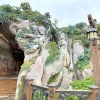 Tokyo DisneySea’s Frozen Kingdom: Elsa’s home at Fantasy Springs has a surprising attraction
Tokyo DisneySea’s Frozen Kingdom: Elsa’s home at Fantasy Springs has a surprising attraction Dragon Quest Burgers and Slime drinks are coming to McDonald’s Japan【Video】
Dragon Quest Burgers and Slime drinks are coming to McDonald’s Japan【Video】 Is it rude to sing along at concerts in Japan? We ask a pro musician for his take
Is it rude to sing along at concerts in Japan? We ask a pro musician for his take 7-Eleven Japan starts new temporary luggage storage service in over 300 branches
7-Eleven Japan starts new temporary luggage storage service in over 300 branches Disillusionment at Tsukiji’s tourist-target prices led us to a great ramen restaurant in Tokyo
Disillusionment at Tsukiji’s tourist-target prices led us to a great ramen restaurant in Tokyo Japan may add Japanese language proficiency, lifestyle classes to permanent foreign resident requirements
Japan may add Japanese language proficiency, lifestyle classes to permanent foreign resident requirements Starbucks Japan releases new zodiac chilled cup drink for 2026
Starbucks Japan releases new zodiac chilled cup drink for 2026 Lacquerware supplier to emperor of Japan and Pokémon team up for new tableware
Lacquerware supplier to emperor of Japan and Pokémon team up for new tableware Starbucks teams up with 166-year-old Kyoto doll maker for Year of the Horse decorations【Photos】
Starbucks teams up with 166-year-old Kyoto doll maker for Year of the Horse decorations【Photos】 Starbucks on a Shinkansen bullet train platform: 6 tips for using the automated store in Japan
Starbucks on a Shinkansen bullet train platform: 6 tips for using the automated store in Japan Is this the most relaxing Starbucks in Japan?
Is this the most relaxing Starbucks in Japan? Large amount of supposed human organs left in Osaka marketplace
Large amount of supposed human organs left in Osaka marketplace Tokyo’s Tsukiji sushi neighborhood asks tour groups to stay away for the rest of the month
Tokyo’s Tsukiji sushi neighborhood asks tour groups to stay away for the rest of the month Japan’s human washing machines will go on sale to general public, demos to be held in Tokyo
Japan’s human washing machines will go on sale to general public, demos to be held in Tokyo Japanese train company is letting fans buy its actual ticket gates for their homes
Japanese train company is letting fans buy its actual ticket gates for their homes Tokyo considering law requiring more trash cans following litter increase in heavily touristed area
Tokyo considering law requiring more trash cans following litter increase in heavily touristed area Nintendo’s Kirby now delivering orders at Kura Sushi restaurants, but not in Japan
Nintendo’s Kirby now delivering orders at Kura Sushi restaurants, but not in Japan Tokyo event lets you travel back in time, for free, to celebrate 100 years since Showa era start
Tokyo event lets you travel back in time, for free, to celebrate 100 years since Showa era start Sanrio theme park in Japan announces plans to expand into a Sanrio resort
Sanrio theme park in Japan announces plans to expand into a Sanrio resort Survey asks foreign tourists what bothered them in Japan, more than half gave same answer
Survey asks foreign tourists what bothered them in Japan, more than half gave same answer Japan’s deadliest food claims more victims, but why do people keep eating it for New Year’s?
Japan’s deadliest food claims more victims, but why do people keep eating it for New Year’s? We deeply regret going into this tunnel on our walk in the mountains of Japan
We deeply regret going into this tunnel on our walk in the mountains of Japan Studio Ghibli releases Kodama forest spirits from Princess Mononoke to light up your home
Studio Ghibli releases Kodama forest spirits from Princess Mononoke to light up your home Major Japanese hotel chain says reservations via overseas booking sites may not be valid
Major Japanese hotel chain says reservations via overseas booking sites may not be valid Put sesame oil in your coffee? Japanese maker says it’s the best way to start your day【Taste test】
Put sesame oil in your coffee? Japanese maker says it’s the best way to start your day【Taste test】 The top 10 annoying foreign tourist behaviors on trains, as chosen by Japanese people【Survey】
The top 10 annoying foreign tourist behaviors on trains, as chosen by Japanese people【Survey】 No more using real katana for tourism activities, Japan’s National Police Agency says
No more using real katana for tourism activities, Japan’s National Police Agency says Starbucks Japan reveals new sakura drinkware collection, inspired by evening cherry blossoms
Starbucks Japan reveals new sakura drinkware collection, inspired by evening cherry blossoms Day Two of our cycling trip across the Inland Sea on Japan’s amazing Shimanami Kaido
Day Two of our cycling trip across the Inland Sea on Japan’s amazing Shimanami Kaido Bunny stampede! The joys of Rabbit Island【Video】
Bunny stampede! The joys of Rabbit Island【Video】 The bunnies! There’s… too many of them! AAARGH!!!
The bunnies! There’s… too many of them! AAARGH!!! This Year of the Rabbit, visit some of the best Japanese sightseeing spots related to rabbits
This Year of the Rabbit, visit some of the best Japanese sightseeing spots related to rabbits Twitter user posts video of swarming bunnies on Rabbit Island, we all wish we were there
Twitter user posts video of swarming bunnies on Rabbit Island, we all wish we were there Japan has rabbits that cosplay each fall…as other rabbits?!? 【Photos】
Japan has rabbits that cosplay each fall…as other rabbits?!? 【Photos】 Rabbit at Japanese temple freaks people out with glowing eyes, Buddhist deity inside its chest
Rabbit at Japanese temple freaks people out with glowing eyes, Buddhist deity inside its chest “Rabbits are liquid?” Escape artist bunny breaks free of its cage in Japan【Video】
“Rabbits are liquid?” Escape artist bunny breaks free of its cage in Japan【Video】 Japan Travel: Exploring Manabeshima cat island
Japan Travel: Exploring Manabeshima cat island A heavenly trip to Japan’s Demon Island in the Seto Inland Sea【Photos】
A heavenly trip to Japan’s Demon Island in the Seto Inland Sea【Photos】 Japanese island with a population less than 10 is a hidden gem you won’t find in travel guides
Japanese island with a population less than 10 is a hidden gem you won’t find in travel guides We visit Tokyo’s rabbit café to celebrate Easter in the cutest way possible 【Photos】
We visit Tokyo’s rabbit café to celebrate Easter in the cutest way possible 【Photos】 We visit the “Island of the Great Gods” in Okinawa, soak in spectacularly stunning scenery
We visit the “Island of the Great Gods” in Okinawa, soak in spectacularly stunning scenery Adorable bunny pouches from Japan look like real, live rabbits!
Adorable bunny pouches from Japan look like real, live rabbits! Nintendo’s Kirby is trying to eat pet rabbits in Japan【Photos】
Nintendo’s Kirby is trying to eat pet rabbits in Japan【Photos】 You can be on this beautiful Japanese island in less than two hours from downtown Tokyo
You can be on this beautiful Japanese island in less than two hours from downtown Tokyo
Leave a Reply